|
|
Dear colleagues
Every one of us already had this desire to just relax and reap the rewards of our previous hard work. If this can happen in some professions, it definitively does not apply for instrument scientists and technicians at the large scale facilities at PSI.
When I look, for example, at the small team of the Laboratory for Muon-Spin Spectroscopy (LMU), I am every time amazed by the enthusiasm shown in permanently developing new ideas leading to world-wide unique instrumentation.
|

Alex Amato
|
|
I cite as evidence the on-going µSR instrument improvements, as the SiPM detectors for GPD, the zero-field setup for HAL-9500, the very low temperature capability in DOLLY, the remoderation tests and “quick-sample-changer” for LEM, the new spin-rotator (built with GFA and LOG) in piM3 and finally the project for a new “FLexible and Avanced MuSR Environment” FLAME which will replace LTF.
I once read a quote, by R.L. Stevenson, which looks as if written for instrument scientists and developers at the PSI large scale facilities: “Don't judge each day by the harvest you reap but by the seeds that you plant”. In this sense the members of the PSI user community will also in the future benefit of cutting-edge and unique instrumentation for their research endeavors.
Alex Amato,
on behalf of the Laboratory for Muon Spin Spectroscopy LMU
|
|
Next proposal submission deadlines:
SINQ (selected instruments)
deadline: July 20, 2018
more information
SLS: non-PX-beamlines
deadline: September 15, 2018
more information
SwissFEL
deadline: September 15, 2018
more information
SLS: PX beamlines
deadline: October 15, 2018
more information
Particle Physics
deadline: January 7, 2019
more information
SµS
deadline: February 28, 2019
more information
An overview about all proposal submission deadlines of the PSI facilities can be obtained here.
|
|
|
Creation and deletion of isolated magnetic skyrmions via electrical currents
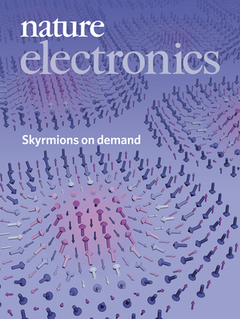 SLS - The quest for higher density information storage SLS - The quest for higher density information storage
In the quest for higher density information storage, some scientists have turned their attention to magnetic Skyrmions - stable nanometer-size swirls of spin. Initially restricted to liquid Helium temperatures, high applied magnetic fields, and to single-crystalline materials, magnetic Skyrmions are now routinely studied in various magnetic multilayer superlattices at room temperature and low applied magnetic fields. Researchers can generate and eliminate Skyrmions en-masse through the application of magnetic fields. However, the applicability of magnetic Skyrmions in future memory devices relies on the addressing and manipulation of single magnetic whirls.
Read the full story
|
|
|
S. Woo et al, Nature Electronics 1, 288 (2018)
|
|
|
Clogging in staked-in needle pre-filled syringes
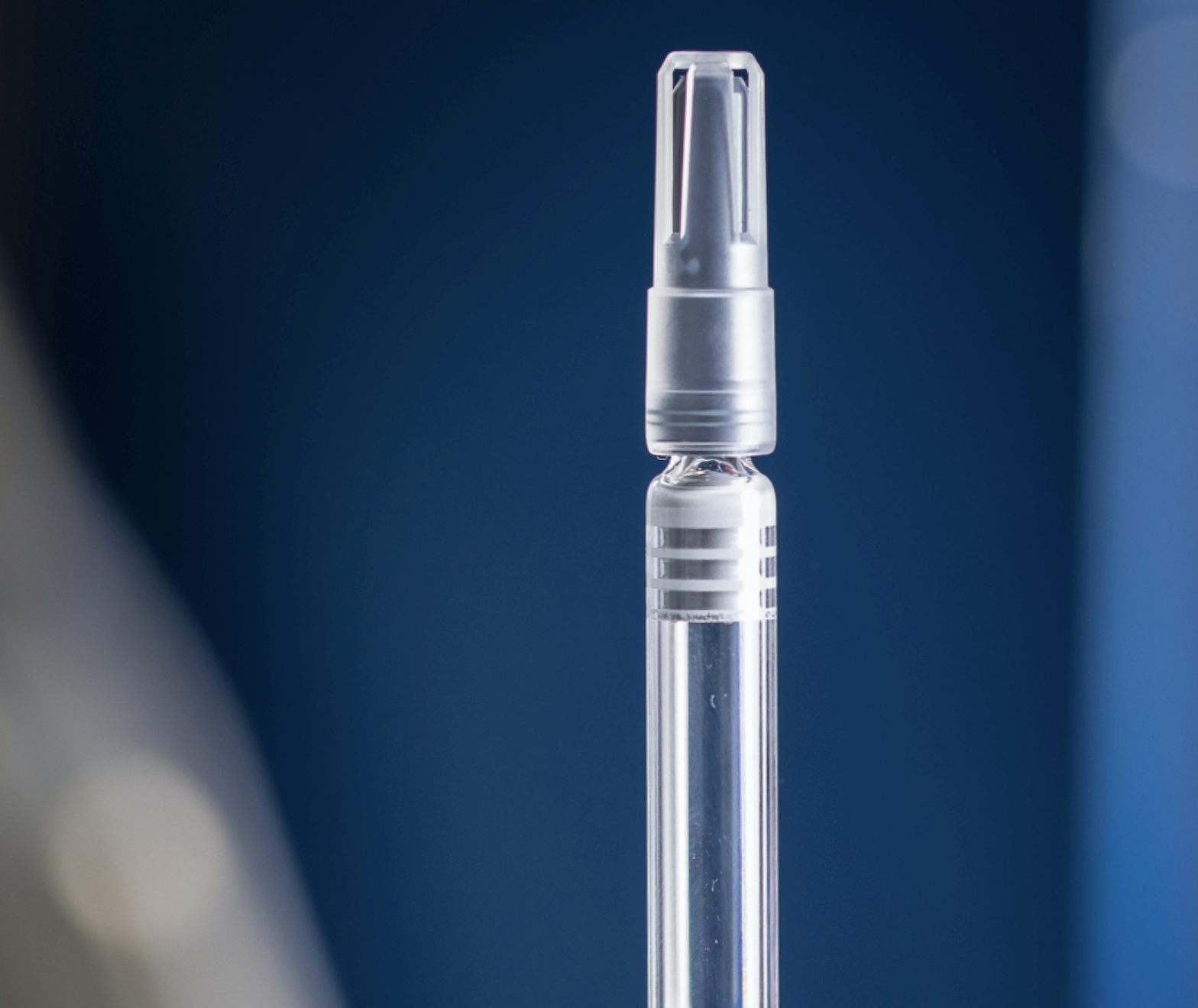
SINQ - Imaging the inside of injection needles with neutrons
Pre-filled syringes with staked-in needles are a popular option enabling patients to give themselves injections at home. These syringes are already filled with the liquid medication and commonly need to be kept cool. Depending on several conditions (the water vapour permeability of the needle's protective shield, the temperature history and the long-term storage condition), it is possible for the injection needle to become clogged. In order to better understand this phenomenon and minimise it in the long run, researchers from the Paul Scherrer Institute PSI, the University of Basel and the company F. Hoffmann-La Roche jointly sought to determine under which conditions the liquid medication inadvertently enters the injection needle. Their research results show that the storage conditions of the pre-filled syringes are truly crucial.
Read the full story
|
|
|
M. De Bardi et al, European Journal of Pharmaceutics and Biopharmaceutics 127, 104 (2018)
|
|
|
Breakdown of Magnetic Order in the Pressurized Kitaev Iridate β-Li2IrO3
 SμS - News from quantum spin liquids SμS - News from quantum spin liquids
Temperature-pressure phase diagram of the Kitaev hyperhoneycomb iridate β-Li2IrO3 is explored using magnetization, thermal expansion, magnetostriction, and muon spin rotation measurements, as well as single-crystal x-ray diffraction under pressure and ab initio calculations. The Néel temperature of β-Li2IrO3 increases with the slope of 0.9 K/GPa upon initial compression, but the reduction in the polarization field Hc reflects a growing instability of the incommensurate order. At 1.4 GPa, the ordered state breaks down upon a first-order transition, giving way to a new ground state marked by the coexistence of dynamically correlated and frozen spins ...
Read the full story
|
|
|
M. Majumder et al, Physical Review Letters 120, 237202 (2018)
|
|
|
Biological light sensor filmed in action
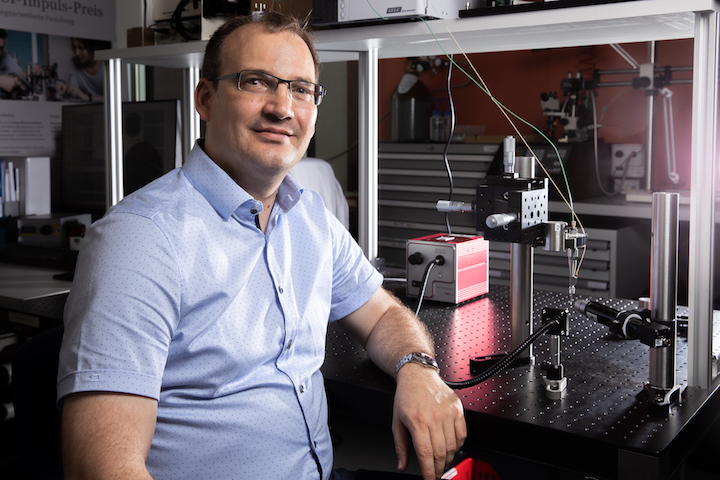 SwissFEL / LCLS - Produktion of a molecular movie SwissFEL / LCLS - Produktion of a molecular movie
Using X-ray laser technology, a team led by researchers of the Paul Scherrer Institute PSI has recorded one of the fastest processes in biology. In doing so, they produced a molecular movie that reveals how the light sensor retinal is activated in a protein molecule. Such reactions occur in numerous organisms that use the information or energy content of light – they enable certain bacteria to produce energy through photosynthesis, initiate the process of vision in humans and animals, and regulate adaptations to the circadian rhythm. The movie shows for the first time how a protein efficiently controls the reaction of the embedded light sensor. The images, now published in the journal Science, were captured at the free-electron X-ray laser LCLS at Stanford University in California. Further investigations are planned at SwissFEL, the new free-electron X-ray laser at PSI.
Read the full story
|
|
|
P. Nogly et al, Science, advanced online publication (June 2018)
|
|
|
Observation of ttH Production
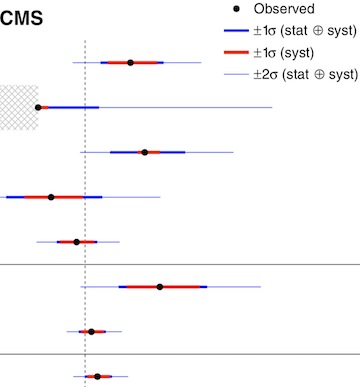 Particle Physics - The new CMS Pixel Detector contributes to the analysis of Higgs production Particle Physics - The new CMS Pixel Detector contributes to the analysis of Higgs production
The observation of Higgs boson production in association with a top quark-antiquark pair is reported, based on a combined analysis of proton-proton collision data at center-of-mass energies of √s = 7,8, and 13 TeV, corresponding to integrated luminosities of up to 5.1, 19.7, and 35.9 fb-1, respectively. The data were collected with the CMS detector at the CERN LHC. The results of statistically independent searches for Higgs bosons produced in conjunction with a top quark-antiquark pair and decaying to pairs of W bosons, Z bosons, photons, τ leptons, or bottom quark jets are combined to maximize sensitivity...
Read the full story
|
|
|
A.M. Sirunyan et al (CMS collaboration), Physical Review Letters 120, 231801 (2018)
|
|
|
CALIPSOplus - I3 Access Program also for SMEs
SLS
CALIPSOplus, a European Horizon2020 funded research and innovation program, provides access support for SMEs to light sources. The access is based on a specific review system for SMEs in parallel to the established academic access route but following the same principles. The proposal confidentiality is kept during the whole process. If the proposal is accepted, the SME will have access to the requested light sources and the experiments will be financially supported through CALIPSOplus, more information.
For industry use, SLS and SwissFEL also offer direct access through the proprietary route, as well. Read more |
|
Operation, proposals and upgrade
SINQ
SINQ will resume normal user operation as planned from July 2nd on for the rest of the year. For six instruments (FOCUS, EIGER, TASP, DMC, HRPT and SANS-II) a second call for proposals in 2018 has been launched. The submission deadline will be July 20. More information on that subject can be found here.
After the end of the 2018 operation period in December SINQ will undergo a large upgrade program, which includes the replacement of the whole neutron guide system as well as significant upgrades of various instruments. We aim to be back in operation by mid 2020 and will keep you informed about the progress of the program. |
|
Proposal round 2018
SμS
On May 23 the result of the 2018 proposal evaluation round has been distributed to the users of the Swiss Muon Source. In total 190 proposals had been submitted by March 4 (DOLLY: 40, GPD: 20, GPS: 58, HAL: 15, LEM: 33 and LTF: 24). Those proposals applied for totally 827 days of muon beamtime leading to a significant oversubscription on the SμS instruments.
Finally, 124 proposals were accepted for beamtime and 476 days could be totally allocated for the next cycle starting on July 2nd after the restart of the proton accelerator and the facilities attached.
|
|
Movie directors with extra roles
SwissFEL
Data storage devices based on novel materials are expected to make it possible to record information in a smaller space, at higher speed, and with greater energy efficiency than ever before. Movies shot with the X-ray laser show what happens inside potential new storage media, as well as how the processes by which the material switches between two states can be optimised.
More information.
|
|
Apprentices in electronics
Particle Physics
The Laboratory for Particle Physics LTP houses the Vocational Training for apprentices in electronics at PSI. Within the basic training courses in LTP the apprentices are involved in production, tests and delivery of many electronic components, modules and units for PSI projects and therefore contribute significantly to the instrumentation of the PSI user facilities.
Based on an evaluation by SwissMEM, the professional association of the Swiss machine, electrical and metal industries, two of our apprentices, Sven Schlienger and Mario Liechti, qualified for participation in the Swiss Skills 2018. In total 12 participants in electrical engineering will in September compete for the Swiss championship and the ticket to the World Skills 2019. |
|
JUSAP - The Joint Users Association
Dear colleagues
After the first successful pilot experiments, regular user operation at the X-ray laser SwissFEL facility will start at the beginning of 2019. Calls for user proposals will be synchronized with those of SLS. The proposal submission deadline for SwissFEL ARAMIS-Alvra and ARAMIS-Bernina endstations is planned for September 15, 2018.
|
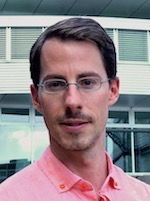
Claude Monney
|
|
We encourage therefore the user community to profit from these new opportunities and to contact the beamline scientists to prepare their proposal.
The 11th annual meeting of the European Synchrotron and FEL user organisation (ESUO) took place at the Polish SOLARIS synchrotron (Krakow, Poland) on April 9th-10th, 2018. In order to get information about this meeting, please read the brief corresponding report that can be found here.
From January 2018, access to the PSI West is controlled by entrance gates and visitors must have a valid badge to enter PSI West, also during the weekdays. Please be sure to order your badge in due time to avoid any trouble.
We encourage you, members of the PSI user community, to communicate to us any issues, concerns or suggestions. In this case, please contact me directly or other committee members.
Yours sincerely,
Claude Monney (on behalf of the JUSAP committee)
|
|
Upcoming events
Please have a look at our conference calendar.
|
|
|
|